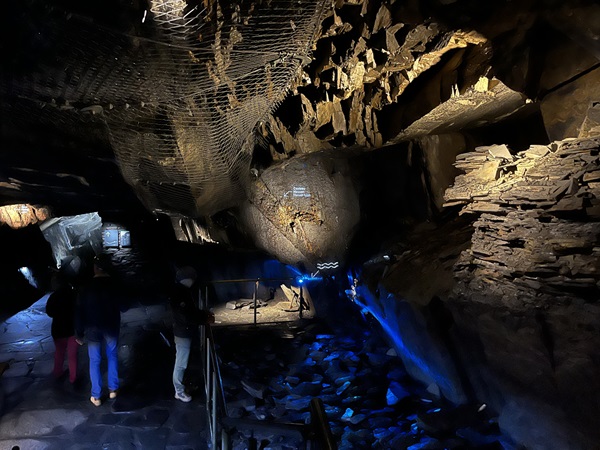 The Slate Museum in Martelange;
Credit: Chronicle.lu
The Slate Museum in Martelange;
Credit: Chronicle.lu
Known today mainly for its financial sector, Luxembourg’s economy has undergone significant changes over the years, going from an agriculture- and crafts-dominated economy to an industrial hub and a leading steel producer in the 19th and 20th centuries.
This series of articles looks at the industrial heritage of Luxembourg, from the steel industry and slate quarrying (and other forms of mining) to the textile industry and rose growing.
Next up is Slate Quarrying & Other Mining.
In addition to iron ore, Luxembourg historically mined slate as well as antimony, lead, gypsum and copper. One of the best ways to learn about the country’s slate quarrying heritage today is with a visit to the Slate Museum in Haut-Martelange (located next to the Belgian border in northwestern Luxembourg). The underground mines operated here from the late-18th century until the last one’s closure in 1986. By the 19th century, various family-run companies were producing approximately six million roofing slates per year. Around 1900, the village counted about 600 workers. As was the case for steel, the development of the rail network facilitated exports and imports. Slate extraction continued during the First World War, although sales slowed down in the 1930s amid the Great Depression. An increasing number of workers were employed during the Second World War - the museum reports that this was “a tactic to avoid Luxembourgish workers being deported”. However, the industry gradually collapsed after 1960, in part due to external competition.
In 1992, the volunteer-run non-profit organisation Les Amis de l’Ardoise (friends of the slate) was set up aimed at keeping he memory of this industrial heritage alive. The site has been managed by Musée de l’Ardoise Asbl since 2019. In 2018, the Luxembourg government invested over €7 million to support the establishment of a slate museum that opens daily and takes visitors down into the underground mines to a depth of -42 metres; this was made possible with the inauguration of the underground gallery “Johanna” in 2022.
Further north, the village of Goesdorf is home to an old antimony mine. The first traces of mining in this area are believed to date back to Roman times, although the first concession was only issued in 1354. Antimony is a metallic element once used (in the 16th to 17th centuries) to treat ailments such as the plague, leprosy and syphilis, to name a few. In earlier times, Egyptians used antimony in cosmetics and medicine. More recently, it was used in printing. A notable discovery in Goesdorf was that of a 52 kg block of antimony in 1935 - believed to be the largest in the world for several years. The mine was permanently closed in 1938.
An old copper mine can be found in the north-east, about 1.5 km outside Stolzembourg. The first written evidence of this mine dates to the 1700s. Copper continued to be mined here until 1944, when the mine was closed due to the war (WWII). The remains of the underground galleries are partially accessible to the public today.
Other mines could be found in Allerborn (Wincrange; lead) and Walferdange (gypsum deposits).








